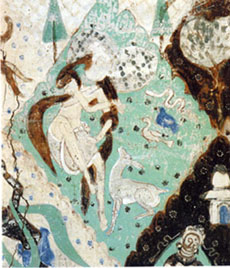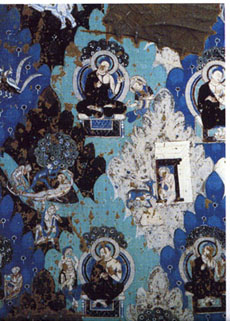.
Understanding Goal 2
To understand the wisdom of Buddhism through original literature
Lessons 2, 3, 4
Understanding Performance
- Before introducing buddhist literature to students, students will first view paintings on some stories from the Jatakas and discuss what they see.
 
- Students will study selections from the Tipitaka (three baskets/categories), scriptural basis for Theravada Buddhism, and the Tripitaka, scriptural basis for Mahayana Buddhism containing doctrines that the Buddha revealed to the most spiritually advanced followers. Stories from the Jatakas, verses from the scripture, The Way of Righteous, parables from the Lotus Sutra will be chosen to them. Afterwards, they will discuss about the important messages conveyed. 1.The Jatakas are stories told by the Buddha about his former lives and his 550 previous states of existence while attaining enlightenment under the Bo tree. Students in groups will choose the Jatakas tales from the following website: Jatakas 2. The Way of Righteousness (The Dharmapada in Sanskrit; the Dhammapada in Pali) is the most widespread sripture containing the brief sayings that the Buddha made during the forty-five years of teaching. There are 423 verses arranged in twenty-six chapters under the topic of friendship, thought, earnestness, punishment, evil and etc. Students will make individual selections from the website named Way of Righteousness and then discuss about their relevance to real life. 3. The Lotus Sultra is one of the most important sultras of Mahayana Buddhism in which the Buddha teaches a disciple named Sariputra. Students will read the essay on the Lotus Sultra from the book, Buddha (p. 156 Wangu, 1993). Students again will choose literature from The Lotus Sutra website and discuss the moral and spiritual lessons they discern:
-
Students view the episode from the Silk Road video series: The Art Gallery in the Desert. They will study Buddhist art in the Dunhuang grottos in the Gobi Desert . Through the cave temples, sculptures and mural paintings, students will discern the Buddhist wisdom reflected in art and learn how Buddhism, an Indian religion, influenced Chinese thoughts, art and culture.
.Ongoing Assessment
|


